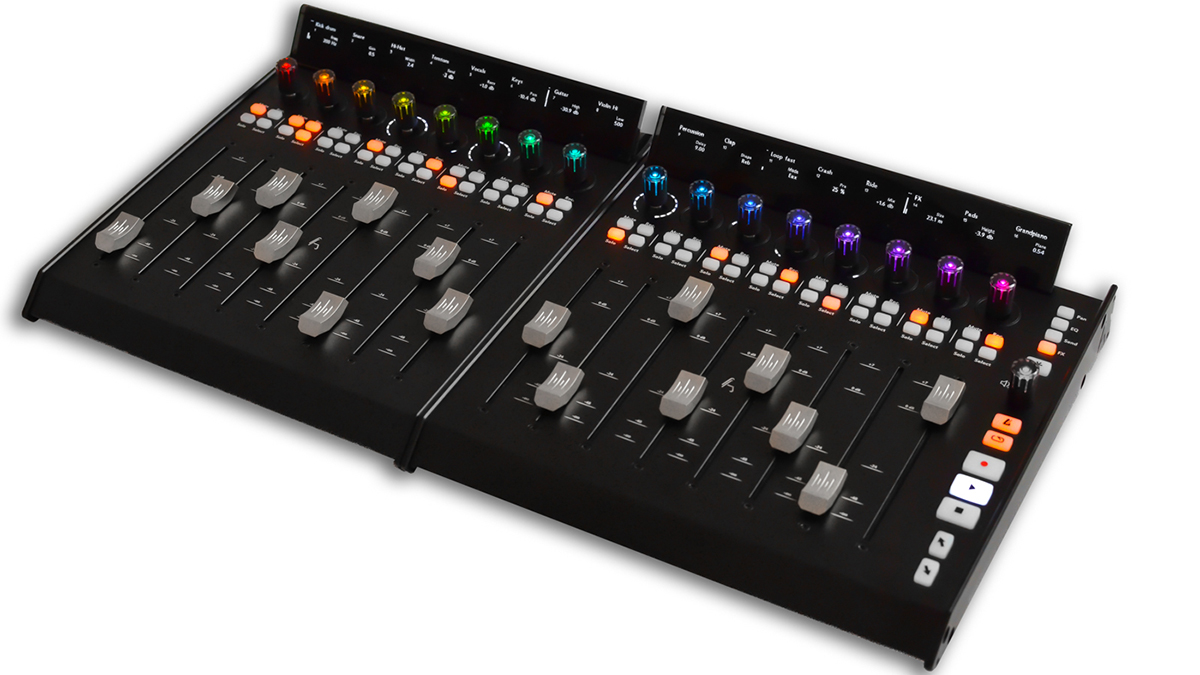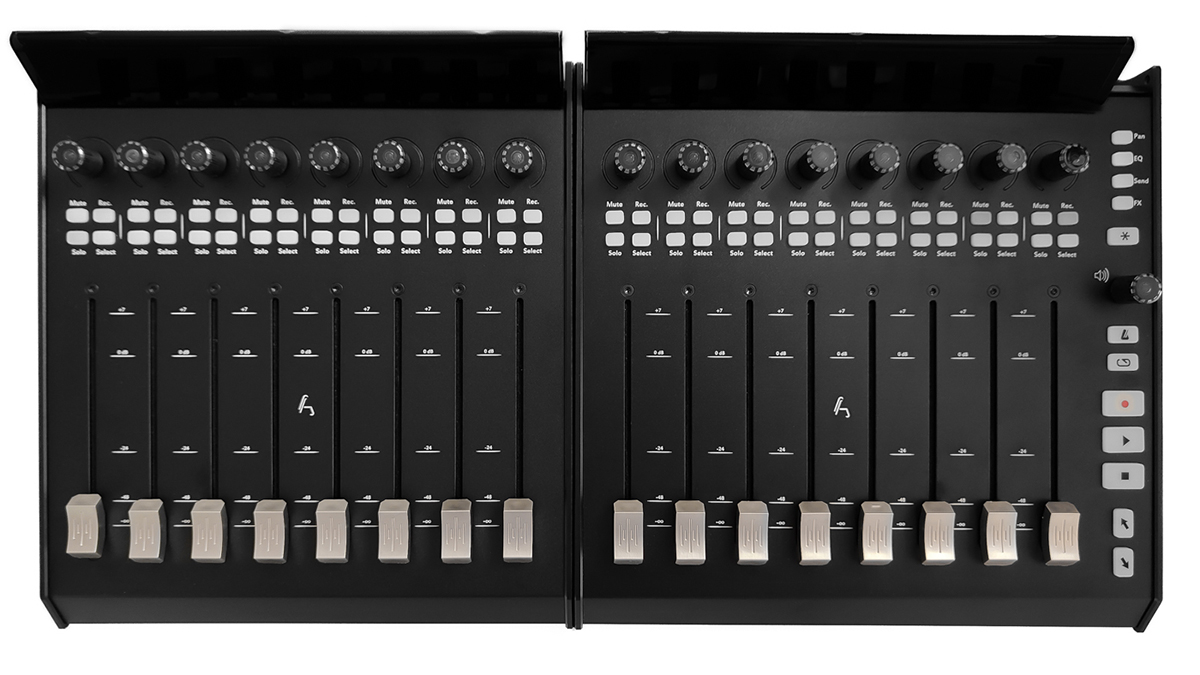The Asparion D700 is a modular DAW controller that you can make as big as you like (within reason)
Start with eight faders then add more as you need them

The Asparion D700 is a modular DAW controller that you can configure to your own specifications. There are three elements to it, and these can be combined pretty much however you like.
The centrepiece is the D700 FT, a mixer-style device that features, eight rotary encoders, eight LED rings, and eight touch-sensitive 100mm motorised faders. There are also 44 programmable LED push buttons, including transport controls. The FT also handles connectivity via a USB-C port and expression and sustain pedal inputs.
If you want more control you’ll need to take a look at the D700 F. This is cut from similar cloth to the FT but loses those transport controls and a few other buttons, bringing the total down to 32.
The D700 S, meanwhile, is an OLED display that features three lines of text with up to 12 characters per track.
You can combine FT and F units to create a control surface with up to 64 faders, which supports standard MIDI, Mackie HUI, OSC and MQTT. Everything can be configured in the dedicated software app, while the anodised alluminium, laser-printed casings are designed both to look good and be robust. The confidence in the build quality is backed up by a three-year warranty.
The D700 is set to be released at the end of Q3 this year priced at $1,399 for the FT, $1,249 for the F and $179 for the S. A bundle containing an FT, an F and two S modules will be available for $2,799. MOre modules could be in the pipeline, too.
Find out more on the Asparion website.
Get the MusicRadar Newsletter
Want all the hottest music and gear news, reviews, deals, features and more, direct to your inbox? Sign up here.




I’m the Deputy Editor of MusicRadar, having worked on the site since its launch in 2007. I previously spent eight years working on our sister magazine, Computer Music. I’ve been playing the piano, gigging in bands and failing to finish tracks at home for more than 30 years, 24 of which I’ve also spent writing about music and the ever-changing technology used to make it.









